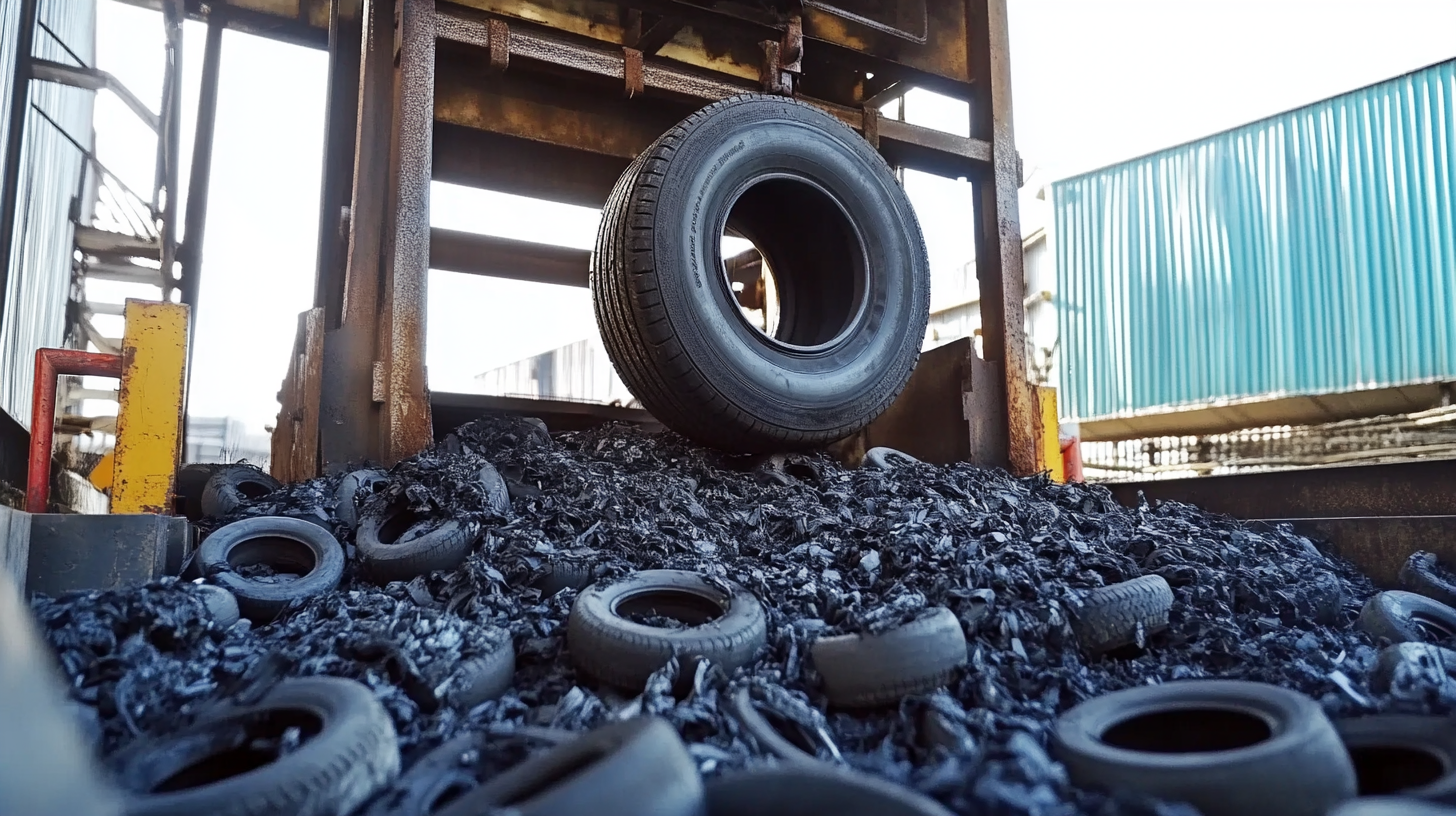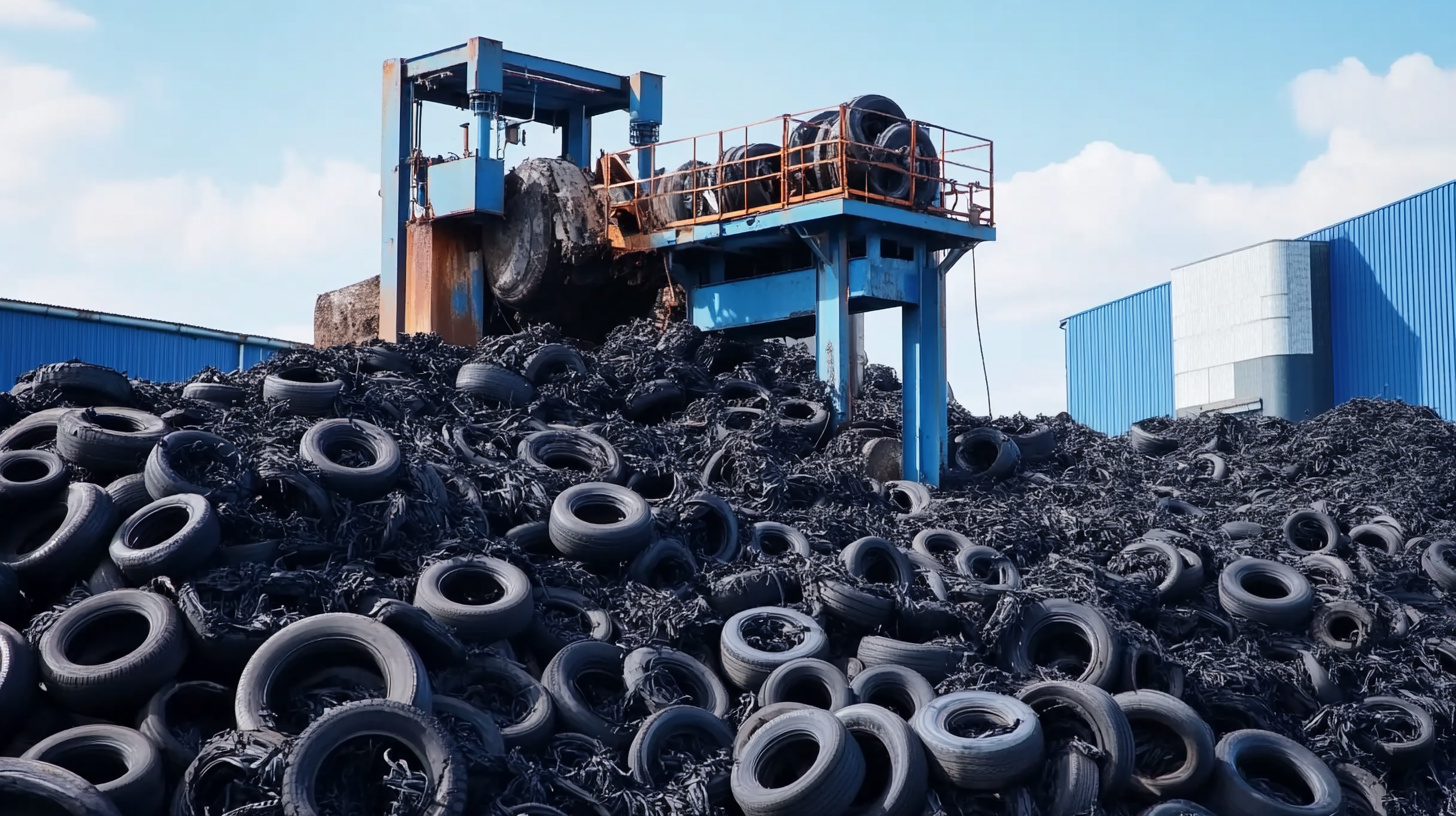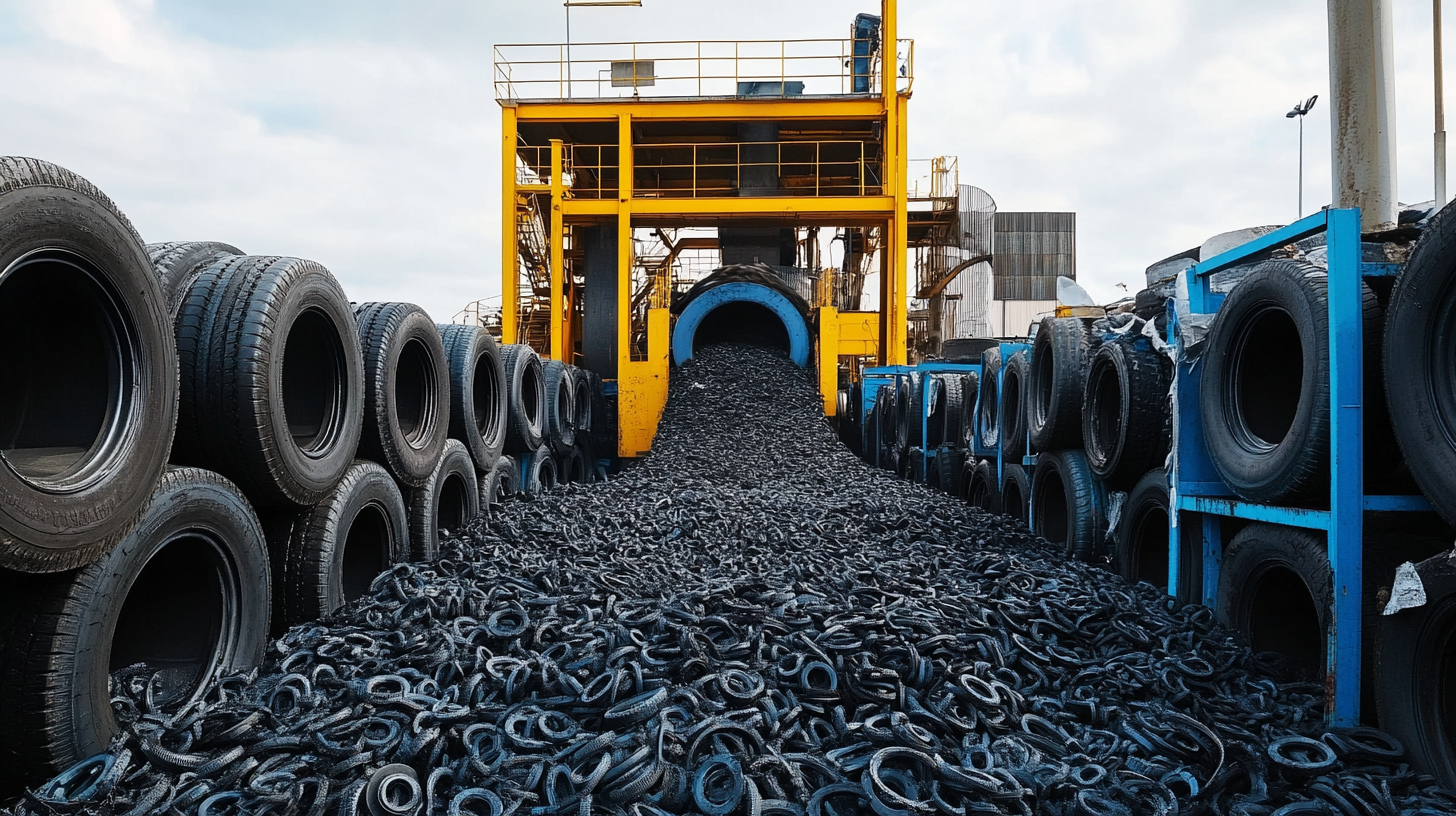In today's world, the importance of sustainable waste management practices cannot be overstated, especially when it comes to recycling tires. With millions of tires discarded each year, finding efficient solutions for tire recycling is crucial to minimize environmental impact. One of the most effective tools in this endeavor is the Tire Shredding Machine, designed to transform scrap tires into manageable and recyclable materials.
 This blog aims to guide you through the process of utilizing a Tire Shredding Machine effectively, highlighting its benefits, capabilities, and the best practices for ensuring a streamlined recycling operation. By embracing innovative shredding technology, we can not only promote environmental sustainability but also unlock opportunities for reusing rubber materials in various industries.
Join us as we delve into the best solutions for efficient tire recycling to create a cleaner, greener future.
This blog aims to guide you through the process of utilizing a Tire Shredding Machine effectively, highlighting its benefits, capabilities, and the best practices for ensuring a streamlined recycling operation. By embracing innovative shredding technology, we can not only promote environmental sustainability but also unlock opportunities for reusing rubber materials in various industries.
Join us as we delve into the best solutions for efficient tire recycling to create a cleaner, greener future.
Efficient tire recycling plays a crucial role in sustainable practices, addressing the growing waste tire problem while contributing to environmental conservation. Tires, composed of durable materials, can take decades to decompose, leading to pollution and habitat destruction. By recycling tires effectively, we can repurpose them into useful products such as rubber mulch, playground surfaces, and even energy through thermal conversion. This not only reduces landfill waste but also minimizes the need for new raw materials, fostering a circular economy.
To enhance tire recycling efforts, consider investing in the best tire shredding machine. The right equipment will expedite the shredding process, significantly increasing throughput and efficiency. It’s important to ensure that the shredding machine is capable of handling various tire sizes and types. Regular maintenance of this machinery is critical; keeping the shredders sharp and well-oiled will improve performance and prolong their lifespan.
Additionally, partnerships with local recycling centers can elevate the impact of tire recycling initiatives. Establishing a collaborative approach enables the sharing of resources and expertise, ultimately leading to more effective recycling practices. Organizations can also promote community events that encourage tire collection, raising awareness about the importance of recycling tires while engaging local citizens in sustainable efforts.
This chart illustrates the efficiency percentages of various tire recycling methods. Efficient tire recycling is necessary for sustainable practices as it reduces waste and promotes resource optimization.
When selecting the best tire shredding machine for efficient tire recycling, there are several key features that should guide your decision. Firstly, look for a machine equipped with a powerful motor and high-torque capabilities, which will ensure that it can handle tough tire materials. The ability to process both passenger and truck tires is essential, as this versatility will maximize the machine's utility for different applications in the recycling process.
Another critical feature is the shredding size adjustment mechanism. The best tire shredding machines offer customizable settings, allowing operators to achieve varying sizes of tire pieces according to specific recycling needs. This flexibility can significantly enhance the end-use of shredded tires, whether for producing crumb rubber, its utilization in civil engineering projects, or energy recovery. Additionally, consider machines that incorporate advanced safety features and easy maintenance options, which can help reduce downtime and extend the lifespan of the equipment, ultimately optimizing your recycling operations.
| Feature | Description | Importance |
|---|---|---|
| Power Capacity | High power ensures efficient shredding of tough rubber material. | Critical |
| Shredding Size Options | Adjustable settings to produce different particle sizes, enhancing versatility. | High |
| Durability | Constructed from high-quality materials to withstand wear and tear. | Critical |
| Safety Features | Includes emergency stop buttons, guards, and safety interlocks. | Very Important |
| Ease of Maintenance | Simple access to components for maintenance and repairs. | Important |
| Noise Level | Low operation noise can improve working conditions. | Moderate |
| Portability | Compact design for easy movement and installation. | Useful |
| Energy Efficiency | Designed to optimize energy use and reduce operational costs. | Important |
Tire shredding machines play a crucial role in enhancing the efficiency and quality of tire recycling processes. According to the USTMA (United States Tire Manufacturers Association), around 300 million tires are discarded in the U.S. each year, making proper recycling an urgent necessity. These machines streamline the recycling process by breaking down whole tires into smaller, manageable pieces, which increases the surface area and allows for more efficient extraction of valuable materials such as rubber, steel, and fiber. With improved shredding technology, the recycling rates can reach up to 99% for specific tire types, significantly reducing waste and promoting sustainable practices.

Tip: When selecting a tire shredding machine, consider the machine’s capacity and efficiency ratings. Opt for machines that offer variable speed settings to handle different tire sizes effectively.
Moreover, the quality of the shredded material is essential for downstream processing. High-quality rubber granulate from tire shredding can be used in various applications, including asphalt, playground surfaces, and even new tires. Industry reports indicate that recycled tire products generate billions in revenue while conserving natural resources. Investing in advanced tire shredding equipment not only boosts recycling efficiency but also enhances the quality of the end product, contributing to a circular economy.
Tip: Regular maintenance of shredding machines can prevent downtime and ensure consistent quality output, maximizing your recycling operation’s productivity.
Tire recycling offers significant environmental and economic benefits that are increasingly being recognized across various industries. With around 300 million tires disposed of each year in the United States alone, effective recycling practices are crucial for reducing landfill waste and conserving natural resources. By utilizing advanced tire shredding machines, tires can be transformed into useful materials such as rubber crumb, which can be employed in playground surfaces, asphalt, and various construction applications. This not only prevents harmful chemicals from leaching into the environment but also promotes a circular economy where materials are reused and repurposed.
Economically, tire recycling fosters job creation and stimulates local economies. Facilities equipped with efficient tire shredding technology can process large volumes of waste tires, providing employment opportunities in both the recycling sector and associated industries. Furthermore, the recycled materials produced can reduce costs for manufacturers who no longer need to source virgin materials. Such practices not only lead to significant savings but also support sustainable development goals by minimizing environmental impact. The use of effective tire shredding machines is thus central to maximizing these benefits, representing a vital investment in a greener future for both our planet and our economy.

In the quest for sustainable tire recycling, innovative technologies in tire shredding play a crucial role in enhancing both performance and safety. Advanced tire shredding machines are designed with precision engineering, allowing for the efficient breakdown of tires into manageable pieces. These machines use high-torque motors and specialized blade configurations to ensure uniform shredding, minimizing waste and maximizing recovery of reusable materials. By implementing state-of-the-art technology, manufacturers can significantly reduce the environmental impact associated with tire disposal, contributing to a greener planet.
Moreover, safety is paramount in the operation of tire shredding equipment. Newer models are equipped with advanced safety features, such as automatic shut-off systems and protective shields, which protect operators from potential hazards. The integration of smart technologies, such as real-time monitoring and remote operation capabilities, enhances workplace safety by reducing the need for manual intervention during the shredding process. This focus on safety not only safeguards workers but also ensures that the shredding process is efficient, reliable, and compliant with industry regulations. By harnessing these innovative technologies, the tire recycling industry is poised to improve performance while adhering to stringent safety standards.
